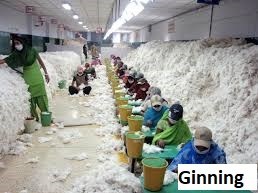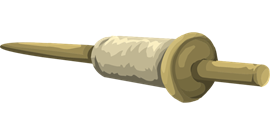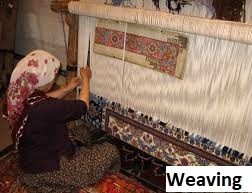6th Grade > Chemistry
FIBRE TO FABRIC MCQs
:
Cotton procedure: 2 Marks
Jute procedure: 2 Marks
Climatic conditions for both: 1 Mark
Cotton fibre:
The cotton plant bears fruits about the size of a lemon, called cotton bolls. The bolls are fibrous and full of seeds. When they are ripe, they burst open and the fiber is collected by hand from the ripe cotton bolls. This process is called picking. Next, the cotton fibres are separated from the seeds by combing them by a process known as ginning. Earlier, ginning was done by hand, but nowadays, machines have been invented to do that for us.
Jute fibre:
The jute plant is generally harvested when it is in the flowering stage. The stems of jute plants are soaked in water for a few days until they start rotting. Then the fibres are separated by hand from the rotting stems.
Climatic conditions:
For cotton plants, the ideal conditions are warm climates and black soil, like in Gujarat.
For jute plants, it is necessary to have high temperatures and a lot of rainfall, like in Assam.
:
Reason: 1 Mark
Fibres + uses: 1 Mark each
Synthetic fibres don't burn but melt on exposure to fire. If they catch fire, they melt and stick to the body of the person wearing them. This is why it is advised not to wear clothes made of synthetic fibre while working in a kitchen or in a laboratory.
Four synthetic fibres - rayon, nylon, Teflon, and acrylic
Rayon - It is used for making surgical dressings.
Nylon - It is used for making ropes.
Teflon - It is used as a non-stick coating for pans and other cookware.
Acrylic- It is used to make coloured plexiglass sheets.
:
C
Synthetic fibres are prepared from chemicals in the laboratories. For example, Nylon
:
A
Natural fibres are obtained from plants and animals. For example, cotton is obtained from the seeds of cotton plant, wool is obtained from the hair of animals like yak, sheep, etc.
Synthetic fibres are obtained from different chemicals and petroleum products. For example, nylon, terylene, etc.
:
D
Takli is a simple stick with a disc like attachment to prevent the spun thread from slipping. It is usually made from wood.
In English, the takli is called the spindle. It is used for spinning, twisting fibres such as wool, cotton and hemp to make yarn.
:
C
The process of making yarn from fibres is known as spinning. It is the process of twisting fibres together to form yarn.
:
A and B
Early humans used fur, leaves and fibre from barks to make clothes. Cotton and linen clothes were used after development of agriculture. Thus, they relied on readily available sources such as animal fur and plant leaves to make clothes.
:
D
Knitting is the process by which a single yarn is used to make fabric. It involves interlocking loops of wool or other yarn with knitting needles or on a machine.























